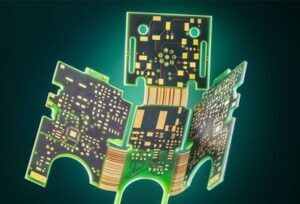Rigid-flex PCBs Reduce Electronic Products Assembly Costs
2023-02-21
Rigid-flex PCB fabrication may sound expensive, but they actually save a lot of money in the assembly of electronic systems.
Thanks to the Rigid-flex PCB structure, the circuit board can be bent and folded to reduce the size of the product.
What is rigid-flex PCBs?
Rigid and flexible board is the combination of rigid PCB and flexible PCB technology. In this type of PCB, the subcircuits of a rigid PCB can be connected to one or more flexible circuits. The flexible part of a rigid flexible PCB is usually a multilayer printed circuit.
What material does rigid-flex PCBs choose?
Rigid-flex PCBs as the name suggests is a combination of rigid and flexible materials, including core, prepreg, copper foil, flexible laminates, cladding and bonding layers.
Flowless prepreg is one of the key components in rigid-flexible fabrication. This material prevents the epoxy from flowing into the flexible part of the PCB.
Flexible PCBs can be made of materials only a few microns thick and are commonly used in satellite and aerospace applications.
If you have questions about this, ask your PCB manufacturer for guidance on your PCB lamination and design rules.
How to reduce assembly cost with rigid-flexible PCBs?
Using rigid flexible PCB in your project can save some costs:
- Direct cost: reduced bill of materials(BOM) and inventory. For multiple interconnected rigid PCBs, flexible PCBs can replace wiring harnesses and eliminate the requirement for connectors, providing direct cost savings.
- Overhead costs: Because rigid flexible PCBs do not involve harness assembly, can reduce assembly costs and improve reliability.
How to minimize the manufacturing cost of rigid-flexible PCBs?
Keep the number of layers as few as possible
Reducing the number of layers can reduce the amount of prepreg for PCB manufacturing. The same fewer layers also simplify the PCB manufacturing process, thus reducing the total PCB manufacturing cost
Rigid laminates are used to achieve overall thickness
It is suggest to use rigid laminates to achieve a specific total thickness, which is less costly than non-flow prepreg.
Make sure the flexible part ends at the rigid part
If the PCB design requires one or more flexible arms of the flexible PCB to end in a flexible cable, additional mechanical support(flexible stiffeners). Because flexible connections do not have thickness or stiffness, having the flexible arm end up in the rigid part reduces the overall cost of a rigid-flexible PCB.
Summarize
The earlier you consult the PCB manufacturer in the planning stage, the better your PCB will be. Optimizing the PCB for your final product can save you money during system assembly.
KingPCB’s flexible PCB services include Flexible PCB prototype, Rigid Flexible PCB, and Flexible HDI PCB. Contact us now for the latest quote on your PCB!

